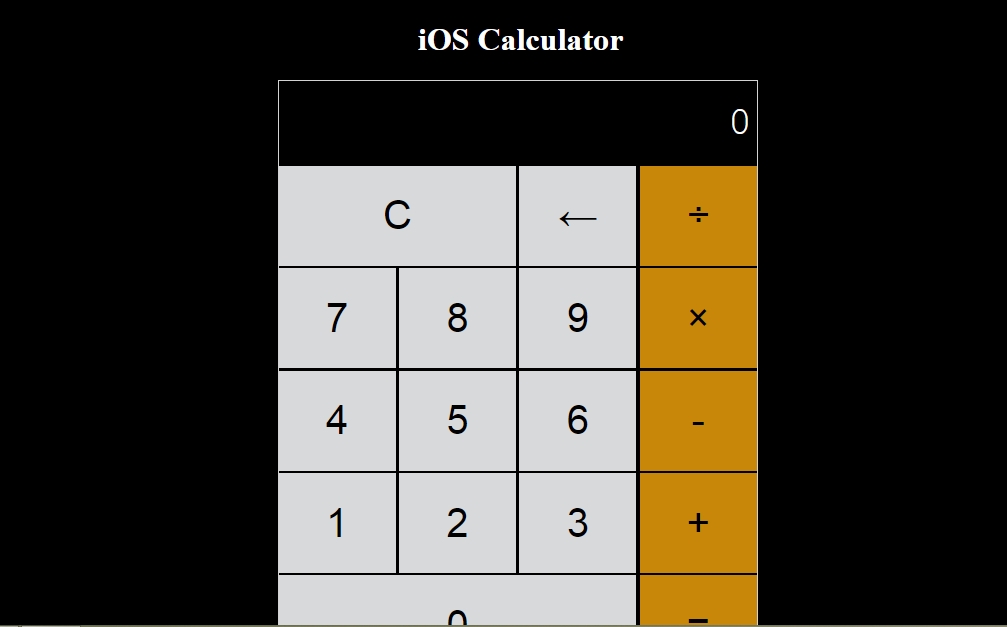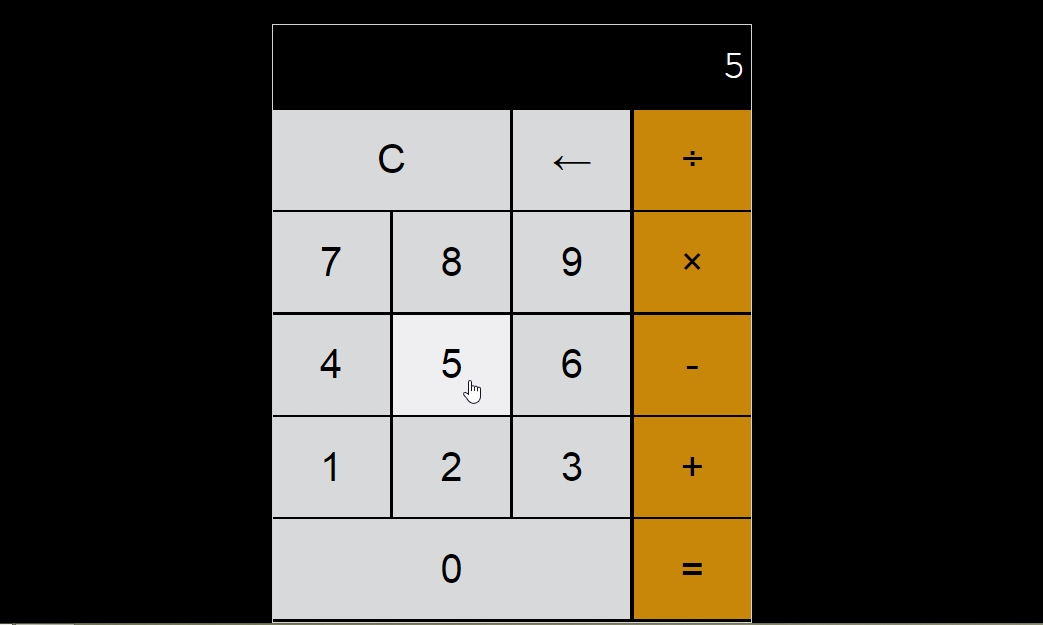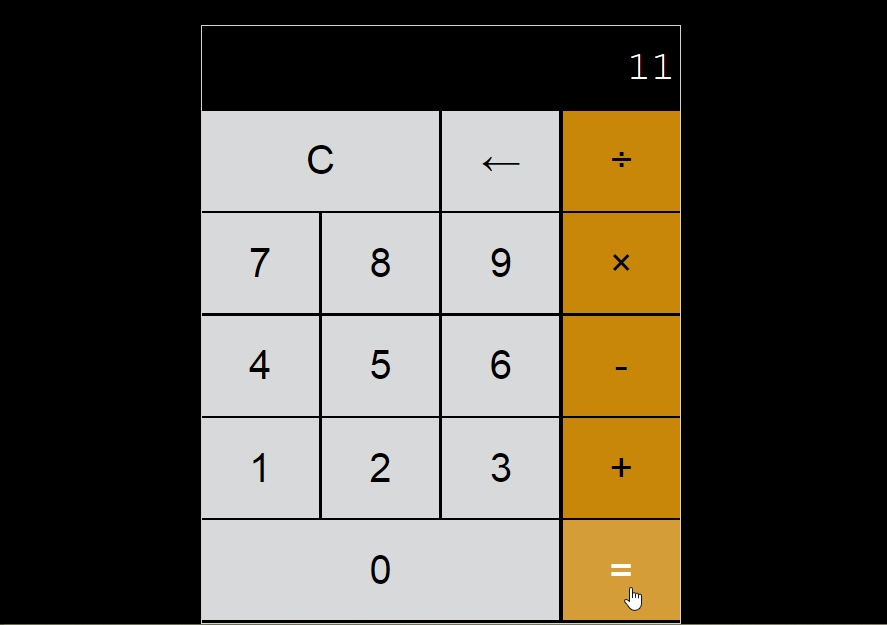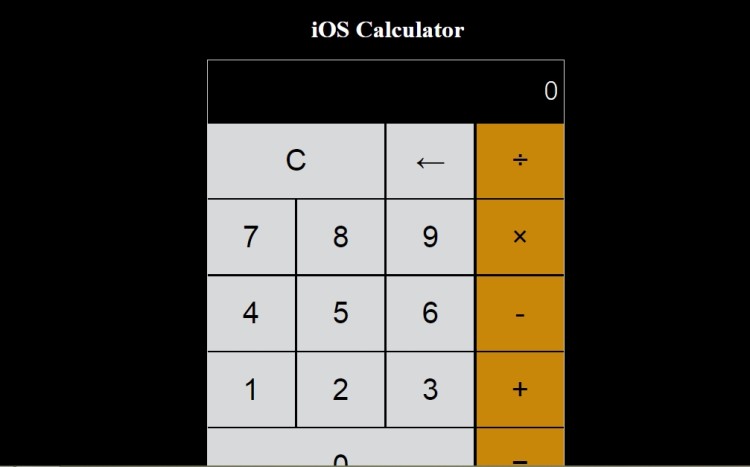iOS Calculator App Using HTML, CSS, and JavaScript with Source Code
The iOS Calculator App is a lightweight web application built entirely with JavaScript. It features a clean and simple design that closely resembles the original iOS calculator. The iOS Calculator App in JavaScript is an excellent project for beginners, serving as an introductory exercise in building calculators. This project also provides a valuable opportunity to practice and strengthen fundamental programming skills in JavaScript while working on a practical and visually familiar application.
The iOS Calculator App Using HTML, CSS, and JavaScript with Source Code is free to be downloaded just read the content below for more info. This application is for educational purpose only.
iOS Calculator App Using HTML, CSS, and JavaScript with Source Code Basic Information
- Language used: JavaScript
- Front-end used: HTML & CSS
- Coding Tool used: Notepad++ or any text editor that can run html files
- Type: Web Application
- Database used: None
About iOS Calculator App
The iOS Calculator App Using JavaScript is a web-based replica of the default calculator found on iPhones, designed with HTML, CSS, and JavaScript to closely resemble the sleek and modern iOS interface. It allows users to perform essential arithmetic operations such as addition, subtraction, multiplication, and division, while also handling decimal inputs and clear/reset functions. The app focuses on providing a smooth user experience by mimicking the layout, button styles, and responsive design of the original iOS calculator, making it visually familiar and easy to use. For beginners, this project is an excellent way to practice DOM manipulation, event handling, and logical operations in JavaScript, as well as to understand how user inputs can be processed and displayed in real time. Additionally, it demonstrates the importance of combining front-end design with functional logic, making it a practical and fun project for learning web development.
iOS Calculator App Using HTML, CSS, and JavaScript with Source Code Features
- iOS-Inspired User Interface
- Clean and modern design styled to look like the **default iOS calculator
- Buttons arranged in a grid layout for intuitive use.
- Responsive design that adapts to different screen sizes.
- Basic Arithmetic Operations
- Supports addition, subtraction, multiplication, and division.
- Handles decimal numbers for more precise calculations.
- Includes clear (C) and delete (←) functions for correction.
- Real-Time Calculation Display
- Main display shows the current input or result.
- Secondary display (optional) to track ongoing expressions.
- Smooth updates after each key press.
- Educational Value
- Demonstrates DOM manipulation and event handling in JavaScript.
- Practical example of building a functional UI component.
- Good beginner-friendly project to practice HTML/CSS styling and JavaScript logic.
Sample Application Screenshot:



iOS Calculator App Using HTML, CSS, and JavaScript with Source Code Installation Guide
- Download the source code in this site.
- Locate and Extract the zip file.
- Open the extracted folder
- Find and locate the file "index.html".
- Open the file in a web browser(Chrome, Firefox, etc..).
That's all, The iOS Calculator App was created fully functional using JavaScript language. I hope that this project can help you to what you are looking for. For more projects and tutorials please kindly visit this site. Enjoy Coding!
The iOS Calculator App Using HTML, CSS, and JavaScript with Source Code is ready to be downloaded just kindly click the download button below.
Related Projects & Tutorials
iOS Calculator AppNote: Due to the size or complexity of this submission, the author has submitted it as a .zip file to shorten your download time. After downloading it, you will need a program like Winzip to decompress it.
Virus note: All files are scanned once-a-day by SourceCodester.com for viruses, but new viruses come out every day, so no prevention program can catch 100% of them.
FOR YOUR OWN SAFETY, PLEASE:
1. Re-scan downloaded files using your personal virus checker before using it.
2. NEVER, EVER run compiled files (.exe's, .ocx's, .dll's etc.)--only run source code.

